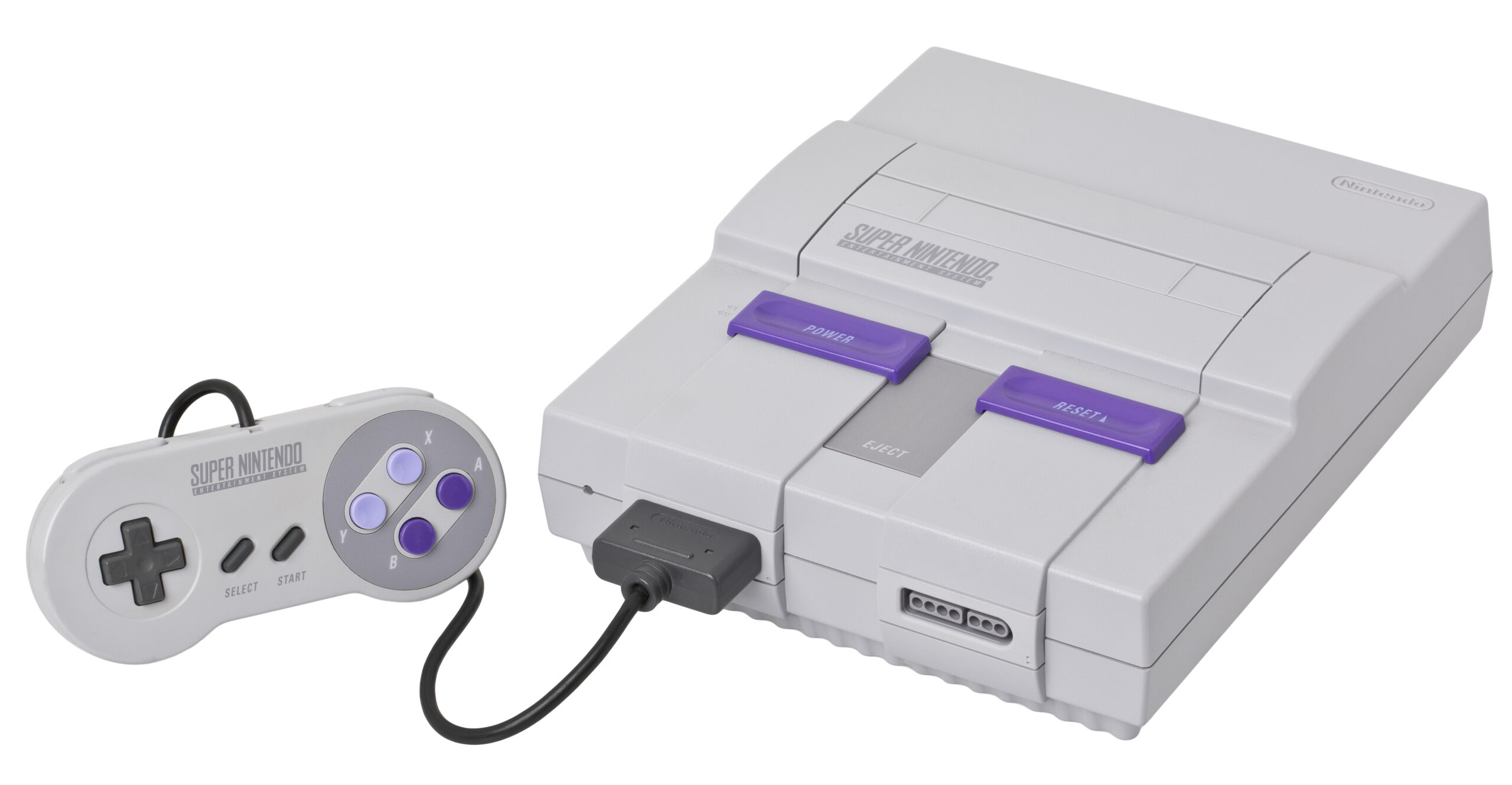The Super Nintendo Entertainment System (SNES) is one of the most iconic consoles in gaming history. Released in 1990, the SNES had a lasting impact on the industry, introducing new technologies and pushing the boundaries of what was possible in video games. Its legacy can still be felt today, as many of the innovations it introduced are still used in modern consoles. However, to fully appreciate the significance of the SNES, it’s important to understand the consoles that came before it. The evolution of gaming consoles has been a gradual process, with each iteration building upon the previous one. By taking a brief look at the consoles that came before the SNES, we can see how they paved the way for this revolutionary console. In this article, we’ll delve into the history of the SNES and explore its impact on the world of gaming.
History of the SNES
In 1983, the video game market had crashed, leaving many doubting the future of the industry. In Japan, however, gaming giant Nintendo was determined to revolutionize home console gaming. In 1985, the original Nintendo Entertainment System (NES) was released in the US, and it was a massive success. Nintendo quickly worked on a follow-up system, which became known as the Super Nintendo Entertainment System (SNES), first released in Japan in 1990.
The SNES was significantly more powerful than its predecessor, allowing for more advanced graphics and sound. It was also the first console to feature a controller with the now-iconic four-button layout that is still seen in modern controllers today. The console was released in the US in August 1991, and quickly became popular.
One of the most significant advancements of the SNES was the inclusion of the Mode 7 graphics mode, which allowed for advanced scaling and rotation of backgrounds and objects. This technology allowed developers to create dynamic and immersive gaming experiences that were previously not possible on home consoles.
The SNES continued to sell well throughout its lifespan, with new games being released up until 1998 in Japan. While the SNES was eventually surpassed by newer consoles, it remains a beloved piece of gaming history and is still enjoyed by many today.
It’s interesting to note that the SNES had some technical specifications that were ahead of its time, with some arguing that the console was underutilized during its lifespan. For example, the SNES featured a specialized processor called the Super FX chip, which allowed for advanced 3D graphics in games like Star Fox. The console also featured a custom sound chip that allowed for high-quality audio in games.
The SNES was a significant milestone in the history of gaming consoles, paving the way for future advancements in home gaming technology. Its impact on the industry is still felt today, and it continues to be a beloved part of gaming history.
Reception and Sales
The release of the SNES in 1990 was met with critical acclaim and commercial success. The console’s 16-bit graphics and improved sound capabilities exceeded its predecessor, the NES, and set a new standard for gaming.
The competition between the SNES and other consoles of its time, including the Sega Genesis, was intense. However, the SNES remained popular due to its flagship franchises, such as Super Mario, Donkey Kong, and The Legend of Zelda, which attracted a large fanbase.
The SNES ended up selling over 49 million units worldwide, becoming the second best-selling console of its generation, right behind the Sega Genesis. It held a market share of over 30%, making it one of the most popular consoles of all time.
The SNES continued to be successful well into the 1990s, thanks to its support of third-party developers and its impressive library of video games. The SNES’s enduring popularity helped cement its place as an iconic console in the hearts of gamers around the world.
Games
The SNES had an extensive library of games, with over 700 titles released during its lifespan. Some of the most iconic and beloved games of all time were released on the console, making it a cornerstone of gaming history.
One of the most popular and well-received games on the console was Super Mario World. This game allowed players to control the famous plumber and lead him through a variety of levels, introducing new gameplay mechanics and power-ups.
Another beloved game was The Legend of Zelda: A Link to the Past. Players took control of Link as he embarked on his quest to rescue Princess Zelda. The game received critical acclaim for its innovative gameplay, challenging puzzles, and memorable soundtrack.
The SNES also introduced significant technological advancements and innovative gameplay elements that revolutionized the gaming industry. One of these advancements was the introduction of Mode 7 graphics, which allowed players to experience backgrounds that scaled and rotated, leading to dynamic and immersive gameplay experiences. Games like F-Zero and Super Mario Kart utilized this technology to create some of the best racing games of all time.
In conclusion, the SNES library of games was one of the most extensive and impressive in video game history. Its catalog featured a wide variety of games that catered to a broad audience, including action, adventure, puzzle, RPG, and sports games. The SNES was a true gaming pioneer that revolutionized the industry, and its library of games played a crucial role in its success.
Retrospective and Cultural Impact
The Super Nintendo Entertainment System (SNES) was an iconic console that left an indelible mark on the gaming industry. Even decades after its release, the console remains an object of adoration and nostalgia for gamers around the world.
The SNES had a significant cultural impact, with its games showcasing original ideas and advanced features that previously seemed impossible in a console game. Its groundbreaking games introduced new genres, redefined old ones, and set the stage for what would become staples of the gaming industry.
The SNES had a lasting impact on future games and consoles, with contemporary games being heavily influenced by some of the ground-breaking features found in SNES games. As consoles advanced, gamers found themselves consistently looking back on the SNES as a source of inspiration and joy.
While other consoles have come and gone, many gamers still hold the SNES in high regard, playing classic titles and exploring new worlds in old favorites. For many, the SNES represents one of the golden ages of gaming, evoking memories of sitting in front of the screen with friends and family, bonding over some of the best games of all time.
Indeed, the SNES will forever hold a special place in gamers’ hearts, symbolizing an era of innovation, creativity, and the pure joy of play. Whether you grew up with the SNES or discovered it later on, the console’s cultural impact and legacy are undoubtedly significant.
Conclusion
In conclusion, the Super Nintendo Entertainment System (SNES) has left an enduring impact on the gaming industry. We have seen the impressive technological advancements of the SNES, which set a new standard for future gaming consoles. We discussed the remarkable reception, sales figures, and competition that defined the SNES era. The console’s game library featured numerous titles that showcased groundbreaking innovation and became influential to games that followed.
Furthermore, the cultural impact of the SNES on the gaming industry is undeniable. The SNES left a special place in gamers’ hearts due to its enduring influence, memorable games, and technological innovations. It influenced future consoles and games that followed, even to this day. The legacies set by the SNES have made it an essential part of gaming history, and its impact should not be underestimated.
In conclusion, we recommend the SNES to both gaming enthusiasts and those simply interested in video game history. Its significance to the gaming industry is essential to understand, and playing its games is the perfect way to experience a unique part of gaming history. The SNES has sparked a passion for video games in so many people and should be appreciated for the special gaming console it is.
Frequently Asked Questions
1. What does SNES stand for?
SNES stands for Super Nintendo Entertainment System.
2. What were the technical specifications of the SNES?
The SNES had a 16-bit processor, 128 kilobytes of RAM, and a color palette of over 32,000 colors.
3. What were some of the most popular games on the SNES?
Some of the most popular games on the SNES were Super Mario World, The Legend of Zelda: A Link to the Past, and Donkey Kong Country.
4. How did the SNES impact the gaming industry?
The SNES introduced new gameplay mechanics and featured graphics and sound that were ahead of their time. Its influence can be seen in many modern games and consoles.
5. Why is the SNES still beloved by gamers today?
The SNES holds a special place in gamers’ hearts because of the innovative and timeless games that were released on the system. Many gamers also have nostalgic memories associated with playing the console during their childhood.













